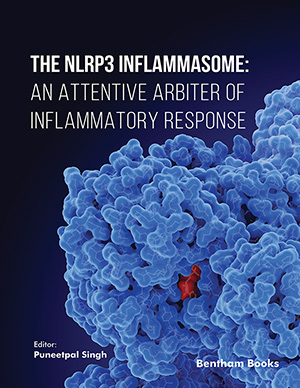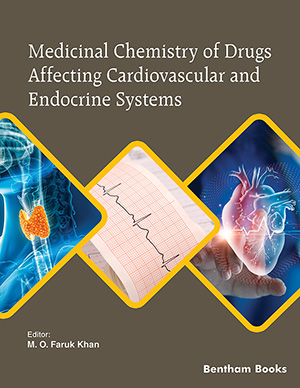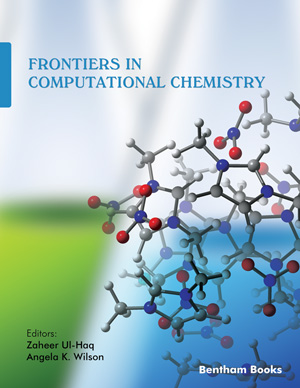Abstract
Temporal lobe epilepsy (TLE) is frequently associated with hippocampal sclerosis, possibly caused by a primary brain injury that occurred a long time before the appearance of neurological symptoms. This type of epilepsy is characterized by refractoriness to drug treatment, so to require surgical resection of mesial temporal regions involved in seizure onset. Even this last therapeutic approach may fail in giving relief to patients. Although prevention of hippocampal damage and epileptogenesis after a primary event could be a key innovative approach to TLE, the lack of clear data on the pathophysiological mechanisms leading to TLE does not allow any rational therapy. Here we address the current knowledge on mechanisms supposed to be involved in epileptogenesis, as well as on the possible innovative treatments that may lead to a preventive approach. Besides loss of principal neurons and of specific interneurons, network rearrangement caused by axonal sprouting and neurogenesis are well known phenomena that are integrated by changes in receptor and channel functioning and modifications in other cellular components. In particular, a growing body of evidence from the study of animal models suggests that disruption of vascular and astrocytic components of the blood-brain barrier takes place in injured brain regions such as the hippocampus and piriform cortex. These events may be counteracted by drugs able to prevent damage to the vascular component, as in the case of the growth hormone secretagogue ghrelin and its analogues. A thoroughly investigation on these new pharmacological tools may lead to design effective preventive therapies.
Keywords: Antiepileptic drug, astrocyte, blood-brain barrier, ghrelin, growth hormone secretagogue, hippocampus, mesial temporal lobe epilepsy, microglia, neuroinflammation, piriform cortex.
Current Medicinal Chemistry
Title:Pathophysiogenesis of Mesial Temporal Lobe Epilepsy: Is Prevention of Damage Antiepileptogenic?
Volume: 21 Issue: 6
Author(s): G. Curia, C. Lucchi, J. Vinet, F. Gualtieri, C. Marinelli, A. Torsello, L. Costantino and G. Biagini
Affiliation:
Keywords: Antiepileptic drug, astrocyte, blood-brain barrier, ghrelin, growth hormone secretagogue, hippocampus, mesial temporal lobe epilepsy, microglia, neuroinflammation, piriform cortex.
Abstract: Temporal lobe epilepsy (TLE) is frequently associated with hippocampal sclerosis, possibly caused by a primary brain injury that occurred a long time before the appearance of neurological symptoms. This type of epilepsy is characterized by refractoriness to drug treatment, so to require surgical resection of mesial temporal regions involved in seizure onset. Even this last therapeutic approach may fail in giving relief to patients. Although prevention of hippocampal damage and epileptogenesis after a primary event could be a key innovative approach to TLE, the lack of clear data on the pathophysiological mechanisms leading to TLE does not allow any rational therapy. Here we address the current knowledge on mechanisms supposed to be involved in epileptogenesis, as well as on the possible innovative treatments that may lead to a preventive approach. Besides loss of principal neurons and of specific interneurons, network rearrangement caused by axonal sprouting and neurogenesis are well known phenomena that are integrated by changes in receptor and channel functioning and modifications in other cellular components. In particular, a growing body of evidence from the study of animal models suggests that disruption of vascular and astrocytic components of the blood-brain barrier takes place in injured brain regions such as the hippocampus and piriform cortex. These events may be counteracted by drugs able to prevent damage to the vascular component, as in the case of the growth hormone secretagogue ghrelin and its analogues. A thoroughly investigation on these new pharmacological tools may lead to design effective preventive therapies.
Export Options
About this article
Cite this article as:
Curia G., Lucchi C., Vinet J., Gualtieri F., Marinelli C., Torsello A., Costantino L. and Biagini G., Pathophysiogenesis of Mesial Temporal Lobe Epilepsy: Is Prevention of Damage Antiepileptogenic?, Current Medicinal Chemistry 2014; 21 (6) . https://dx.doi.org/10.2174/0929867320666131119152201
| DOI https://dx.doi.org/10.2174/0929867320666131119152201 |
Print ISSN 0929-8673 |
| Publisher Name Bentham Science Publisher |
Online ISSN 1875-533X |
Call for Papers in Thematic Issues
Advances in Medicinal Chemistry: From Cancer to Chronic Diseases.
The broad spectrum of the issue will provide a comprehensive overview of emerging trends, novel therapeutic interventions, and translational insights that impact modern medicine. The primary focus will be diseases of global concern, including cancer, chronic pain, metabolic disorders, and autoimmune conditions, providing a broad overview of the advancements in ...read more
Approaches to the treatment of chronic inflammation
Chronic inflammation is a hallmark of numerous diseases, significantly impacting global health. Although chronic inflammation is a hot topic, not much has been written about approaches to its treatment. This thematic issue aims to showcase the latest advancements in chronic inflammation treatment and foster discussion on future directions in this ...read more
Cellular and Molecular Mechanisms of Non-Infectious Inflammatory Diseases: Focus on Clinical Implications
The Special Issue covers the results of the studies on cellular and molecular mechanisms of non-infectious inflammatory diseases, in particular, autoimmune rheumatic diseases, atherosclerotic cardiovascular disease and other age-related disorders such as type II diabetes, cancer, neurodegenerative disorders, etc. Review and research articles as well as methodology papers that summarize ...read more
Chalcogen-modified nucleic acid analogues
Chalcogen-modified nucleosides, nucleotides and oligonucleotides have been of great interest to scientific research for many years. The replacement of oxygen in the nucleobase, sugar or phosphate backbone by chalcogen atoms (sulfur, selenium, tellurium) gives these biomolecules unique properties resulting from their altered physical and chemical properties. The continuing interest in ...read more
 106
106
- Author Guidelines
- Graphical Abstracts
- Fabricating and Stating False Information
- Research Misconduct
- Post Publication Discussions and Corrections
- Publishing Ethics and Rectitude
- Increase Visibility of Your Article
- Archiving Policies
- Peer Review Workflow
- Order Your Article Before Print
- Promote Your Article
- Manuscript Transfer Facility
- Editorial Policies
- Allegations from Whistleblowers
- Announcements
Related Articles
-
Lifelong Endocrine Fluctuations and Related Cognitive Disorders
Current Pharmaceutical Design Nicotinic Receptors in Neurodegeneration
Current Neuropharmacology Etiology of Neuroinflammatory Pathologies in Neurodegenerative Diseases: A Treatise
Current Psychopharmacology Focus on MicroRNAs as Biomarker in Pediatric Diseases
Current Pharmaceutical Design Editorial (Thematic Issue: Polypharmacology in Drug Discovery)
Current Pharmaceutical Design Neuroprotective Effects of Drug-Induced Therapeutic Hypothermia in Central Nervous System Diseases
Current Drug Targets Anticonvulsant and Antitubercular Activities of 6-Phenyl/Biphenyl-4-yl-2- [2-(pyridin-2-ylamino)-ethyl]- and 6-(Biphenyl-4yl)-2-(2N-subtituted amin- 1-yl)-ethyl derivatives of 4,5-dihydropyridazin-3(2H)-one
Letters in Drug Design & Discovery ADP-Ribosyl Cyclase as a Therapeutic Target for Central Nervous System Diseases
Central Nervous System Agents in Medicinal Chemistry The Effect of Protein Restriction in the In Vitro Metabolism of Albendazole in Rats
Drug Metabolism Letters Studies on Target Genes of General Anesthetics-Version 2
Medicinal Chemistry Reviews - Online (Discontinued) Design, Synthesis, Evaluation and Computational Studies of Nipecotic Acid-Acetonaphthone Hybrids as Potential Antiepileptic Agents
Medicinal Chemistry Transient Receptor Potential Channels - Emerging Novel Drug Targets for the Treatment of Pain
Current Medicinal Chemistry Nicotinic Acetylcholine Receptors and Epilepsy
Current Drug Targets - CNS & Neurological Disorders Fluorinated Molecules as Drugs and Imaging Agents in the CNS
Current Topics in Medicinal Chemistry Application of Polymeric Nanoparticles for CNS Targeted Zinc Delivery In Vivo
CNS & Neurological Disorders - Drug Targets Reading and Writing the Blood-Brain Barrier: Relevance to Therapeutics
Recent Patents on CNS Drug Discovery (Discontinued) Phytochemicals as Prototypes for Pharmaceutical Leads Towards Drug Development Against Diabetic Cardiomyopathy
Current Pharmaceutical Design Role of SCN2A c.56G/A Gene Polymorphism in Egyptian Children with Genetic Epilepsy with Febrile Seizure Plus
CNS & Neurological Disorders - Drug Targets An Overview on Chemistry and Biological Importance of Pyrrolidinone
Current Organic Synthesis ABC Transporters in the CNS – An Inventory
Current Pharmaceutical Biotechnology























